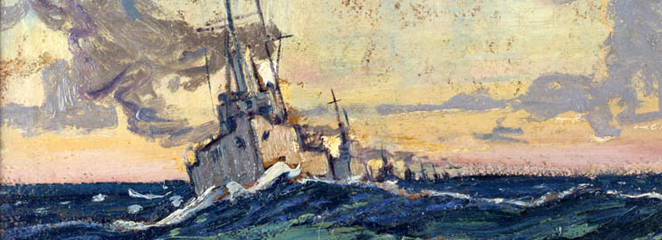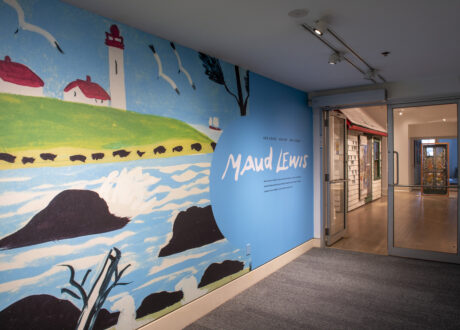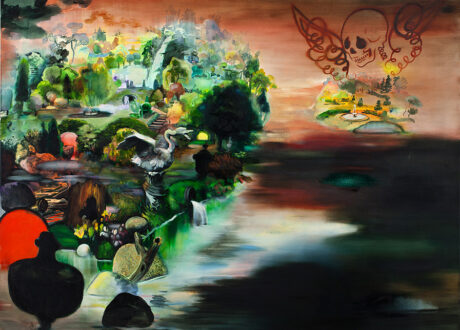

Co-curators:Mora Dianne O’Neill, Associate Curator, Historical Prints and Drawings
Lieutenant Commander Pat Jessup, Community Relations Officer, CFB Halifax
When Halifax became the east coast home of Canada’s Navy on 4 May 1910, the Navy had an admiral but no ships and no sailors. After the outbreak of World War I, Rear-Admiral Charles Kingsmill’s infant navy consisted only of two cast-off British warships, two submarines, and an assortment of trawlers, converted yachts, and drifters, but these small east coast patrols served valiantly to protect shipping lanes in the northwest Atlantic from submarine attack and floating mines. The Royal Canadian Navy achieved maturity during World War Two, growing from 3,300 men and 13 ships to 95,000 men and women on 428 ships, one of the largest fleets in the world, and played a crucial role in the Battle of the Atlantic between September 1939 and May 1945. Today Canada’s 33 warships, submarines, and coastal defence vessels stand ready to respond to domestic or international need, from the far North to the far East.
Throughout the century, as approaches to art-making changed, artists in Halifax have recorded the city’s involvement with the Navy, not least those at the art college. While principal of the Victoria School of Art and Design between 1916 and 1919, Arthur Lismer captured the fascinating camouflage of the dazzle ships lined up in the Harbour. Serving as an official war artist before taking over the helm of the Nova Scotia College of Art in 1946, Donald Cameron Mackay focussed on the sailors who made up the Royal Canadian Navy. Succeeding Mackay as president of the Nova Scotia College of Art and Design, in an office that now overlooked Navy vessels in the Harbour, Garry Neill Kennedy continued this tradition of involvement with the Navy, both in his Figure Painting and The Middle East and Beyond installations. Works by official war artists, such as C Anthony Law and Eric Riordon, and others who simply responded to the situation before them, such as Mary Riter Hamilton, Le Roy Zwicker, Marion Bond, Joan Robertson-Brown, and Steve Higgins, tell more of the ongoing romance between the city and its maritime force.
The Art Gallery of Nova Scotia has partnered with Maritime Forces Atlantic to produce this exhibition that celebrates 100 years of the Navy’s presence in the city.



